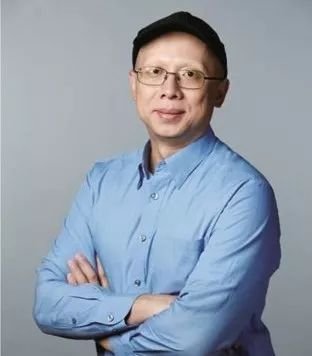蔣興宇檢視原始碼討論檢視歷史
| 蔣興宇 |
 |
蔣興宇,1977年2月出生於四川成都, 南方科技大學生物醫學工程系講席教授、系主任;國家傑出青年科學基金獲得者[1]、國家重點研發項目首席科學家[2]。
蔣興宇1999年獲得美國芝加哥大學化學學士。2004年於美國哈佛大學化學系取得博士學位,師從美國兩院院士George Whitesides教授。2005年至2018年任國家納米科學中心研究員、博士生導師。2018年加入南方科技大學,擔任生物醫學工程系講席教授、系主任。
蔣興宇先後獲得國家傑出青年科學基金、國家重點研發計劃首席科學家、"萬人計劃"科技創新領軍人才、英國皇家化學會會士、中青年科技創新領軍人才、"萬人計劃"青年拔尖人才、國務院特殊津貼專家、中科院"百人計劃"等、騰訊首屆"科學探索獎"、美國醫學與生物工程會會士。在國際重要學術期刊發表SCI論文350餘篇,總引用超過26,000餘次,H因子83 。
蔣興宇主要研究領域為分析化學、微流控、生物醫學工程、納米生物醫學。
基本信息
人物說明----南方科技大學生物醫學工程系主任[3]
外文名稱----Jiang Xingyu
民 族 ---- 漢族
出生地點----四川成都
出生日期----1977年2月
國 籍 ---- 中國
職 業 ---- 教育科研工作者
主要成就----科學探索獎(2019年),國家傑出青年科學基金獲得者(2010年),國家重點研發計劃首席科學家(2019年)
畢業院校----哈佛大學
教育經歷
1999年,獲得美國芝加哥大學化學學士學位;論文導師Mrksich教授。
2004年,於美國哈佛大學化學系獲得博士學位;導師美國兩院院士George Whitesides教授。
工作經歷
2004年至2005年,在美國哈佛大學化學系博士後研究(導師美國兩院院士George Whitesides教授)。
2005年至2018年,任國家納米科學中心/中國科學院大學研究員、教授、博士生導師[4]。
2018年,任南方科技大學生物醫學工程系講席教授系主任。
科研成就
研究方向
研究方向主要包括:微流控芯片生物應用研究;自動化分析儀器研製。
代表性論文
蔣興宇在國際重要學術期刊發表SCI論文350餘篇,總引用超過26000次,H因子83。
22. Thermo-triggered release of CRISPR-Cas9 system bylipid-encapsulated gold nanoparticles for tumor therapy, Wang P, Zhang LM,Zheng WF, Cong LM, Guo ZR, Xie YZY, Wang L, Tang RB, Feng Q, Hamada Y, Gonda K,Hu ZJ, Wu XC, Jiang XY*, Angew Chem Int Ed, 57, 1491-1496. (2018).
21. Skiving stacked sheets of paper into test paper for rapid andmultiplexed assay, Yang MZ, Zhang W, Yang JC, Hu BF, Cao FJ, Zheng WS, Chen YP,Jiang XY*, Science Advances, 3, eaao4862. (2017).
20. Self-adjusting, polymeric multilayered roll that can keep theshapes of the blood vessel scaffolds during biodegradation, Cheng SY, Jin Y,Wang NX, Cao F, Zhang W, Bai W, Zheng WF, Jiang XY*, Adv Mater, 29(28),1700171. (2017).
19. Gold nanoclusters-assisted delivery of NGF siRNA for effectivetreatment of pancreatic cancer, Lei YF, Tang LX, Xie YZY, Xianyu YL, Zhang LM,Wang P, Hamada Y, Jiang K, Zheng WF, Jiang XY*, Nature Communications, 8,15130. (2017).
18. Surface modification of gold nanoparticles with small moleculesfor biochemical analysis, Chen YP, Xianyu YL, Jiang XY*, Accounts Chem Res, 50(2),310-319. (2017).
| 蔣興宇 |
 |
17. Microfluidicsynthesis of rigid nanovesicles for hydrophilic reagents delivery, Zhang L,Feng Q, Wang JL, Sun JS, Shi XH, Jiang XY*. Angew Chem Int Ed,54(13), 3952-3956. (2015).
16. Tunable rigidity of (polymeric core)-(lipid shell) nanoparticlesfor regulated cellular uptake, Sun JS, Zhang L, Wang JD, Feng Q, Liu DB, YinQF, Xu DY, Wei YJ, Ding BQ, Shi XH, Jiang XY*, Adv Mater, 27(8),1402-1407. (2015).
15. Tuning the composition of AuPt bimetallic nanoparticles forantibacterial application, Zhao Y, Ye C, Liu W, Chen R, Jiang XY*, AngewChem Int Ed, 53(31),8127-8131. (2014). (Inside Cover)
14. Identificationof bacteria in water by a fluorescent array, Chen WW, Li QZ, Zheng WS, Hu F,Zhang GX, Wang Z, Zhang DQ, Jiang XY*, Angew Chem Int Ed, 53(50), 13734-13739. (2014).
13. Point-of-carebiochemical assays using gold nanoparticle-implemented microfluidics, Sun JS, Xianyu YL, Jiang XY*, ChemSoc Rev, 43(17), 6239-6253.(2014).
12. Synergyof non-antibiotic drugs and pyrimidinethiol on gold nanoparticles againstsuperbugs, Zhao YY,Chen ZL, Chen YF, Xu J, Li JH, Jiang XY*, J Am Chem Soc, 135(35), 12940-12943. (2013).
11. Nanomaterials forultrasensitive protein detection, Zhang Y, Guo YM, Xianyu YL, Chen WW, Zhao YY,Jiang XY*, Adv Mater, 25(28),3802-3819. (2013).
10. AStrategy for the construction of controlled, three-dimensional, multilayered,tissue-like structures, GongPY, Zheng WF, Huang Z, Zhang W, Xiao D, Jiang XY*, Adv Funct Mater, 23(1), 42-46. (2013).
9. Resettable,multi-readout logic gates based on controllably reversible aggregation of goldnanoparticles, LiuDB, Chen WW, Sun K, Deng K, Zhang W, Wang Z, Jiang XY*, Angew Chem Int Ed, 50(18), 4103-4107. (2011).
8. Copper-mediatedamplification allows readout of immunoassays by the naked eye, Qu WS, Liu YY, Liu DB, Wang Z,Jiang XY*, Angew Chem Int Ed,50(15), 3442-3445. (2011).
7. Small molecule-capped gold nanoparticles as potentantibacterial agents that target gram-negative bacteria, Zhao YY,Tian Y, Cui Y, Liu WW, Ma WS, Jiang XY*, J Am Chem Soc, 132(35), 12349-12356. (2010).
6. Patterning mammalian cells for modeling threetypes of naturally occurring cell-cell interactions, Chen ZL, Li Y, Liu WW, Zhang DZ,Zhao YY, Yuan B, Jiang XY*, Angew Chem Int Ed, 48(44), 8303-8305. (2009).
5. Usingazobenzene-embedded self-assembled monolayers to photochemically control celladhesion reversibly, Liu DB, Xie YY, Shao HW, Jiang XY*, Angew Chem Int Ed, 48(24), 4406-4408. (2009).
4. Visual detection of copper(II) by azide- andalkyne-functionalized gold nanoparticles using click chemistry, Zhou Y,Wang SX, Zhang K, Jiang XY*, Angew Chem Int Ed, 47(39), 7454-7456. (2008).
3. Electrospun nanofibrous membranes: a novel solidsubstrate for microfluidic immunoassays for HIV, Yang DY, Niu X, Liu YY, Wang Y, GuX, Song LS, Zhao R, Ma LY, Shao YM, Jiang XY*, Adv Mater, 20(24), 4770-4775. (2008).
2. Fabrication of aligned fibirous arrays by magneticelectrospinning, Yang DY, Lu B, Zhao Y, Jiang XY*, Adv Mater,19(21),3702-3706. (2007).
1. A method for patterning multiple types of cells byusing electrochemical desorption of self-assembled monolayers withinmicrofluidic channels, Li Y, Yuan B, Ji H, Han D, Chen SQ, Tian F, Jiang XY*, AngewChem Int Ed, 46(7), 1094-1096. (2007).
榮譽記錄
2019年9月20日,「科學探索獎」評審委員會公布2019年「科學探索獎」獲獎名單,蔣興宇在列[5]。
參考來源
- ↑ 石室校友蔣興宇發明"電子紋身"黑科技,頂刊《Sci Adv》發表震驚世界 ,騰訊, 2021-01-28
- ↑ 高級會員 蔣興宇 ,中國化學會
- ↑ 神仙湖醫學大師論壇回顧 | 蔣興宇教授:精微製造的柔性器件用於生物醫學傳感器 , 香港中文大學, 2022-10-18
- ↑ 蔣興宇——講席教授、系主任——南方科技大學生物醫學工程系 ,課題組網, 2021-06-27
- ↑ 蔣興宇教授獲騰訊首屆「科學探索獎」 ,南方科技大學